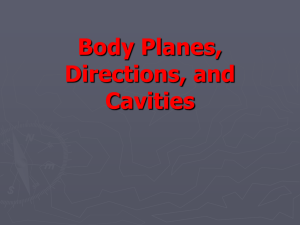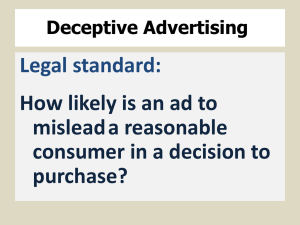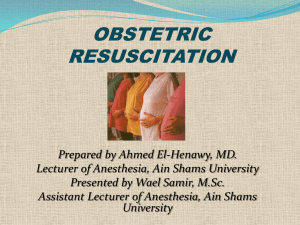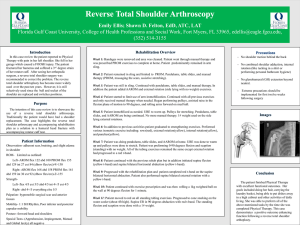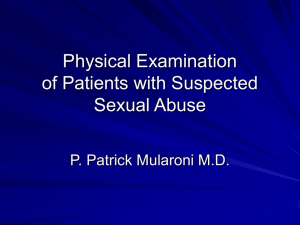Double supine
advertisement
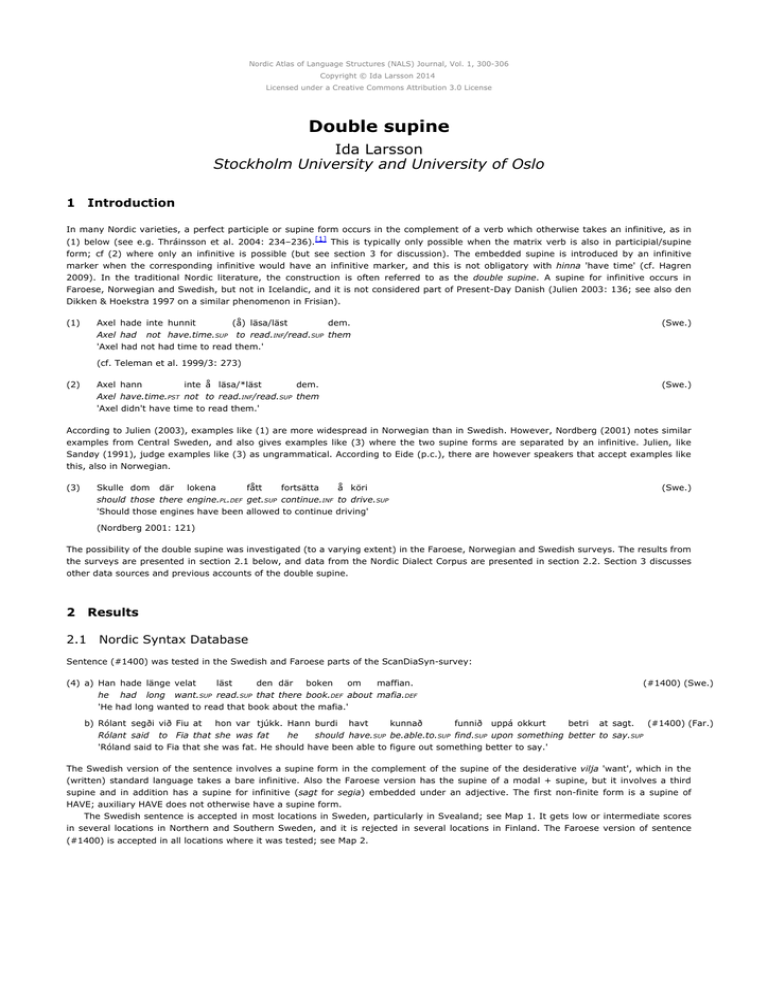
Nordic Atlas of Language Structures (NALS) Journal, Vol. 1, 300-306 Copyright © Ida Larsson 2014 Licensed under a Creative Commons Attribution 3.0 License Double supine Ida Larsson Stockholm University and University of Oslo 1 Introduction In many Nordic varieties, a perfect participle or supine form occurs in the complement of a verb which otherwise takes an infinitive, as in (1) below (see e.g. Thráinsson et al. 2004: 234–236).[1] This is typically only possible when the matrix verb is also in participial/supine form; cf (2) where only an infinitive is possible (but see section 3 for discussion). The embedded supine is introduced by an infinitive marker when the corresponding infinitive would have an infinitive marker, and this is not obligatory with hinna 'have time' (cf. Hagren 2009). In the traditional Nordic literature, the construction is often referred to as the double supine. A supine for infinitive occurs in Faroese, Norwegian and Swedish, but not in Icelandic, and it is not considered part of Present-Day Danish (Julien 2003: 136; see also den Dikken & Hoekstra 1997 on a similar phenomenon in Frisian). (1) Axel hade inte hunnit (å) läsa/läst dem. Axel had not have.time.SUP to read.INF/read.SUP them 'Axel had not had time to read them.' (Swe.) (cf. Teleman et al. 1999/3: 273) (2) Axel hann inte å läsa/*läst dem. Axel have.time.PST not to read.INF/read.SUP them 'Axel didn't have time to read them.' (Swe.) According to Julien (2003), examples like (1) are more widespread in Norwegian than in Swedish. However, Nordberg (2001) notes similar examples from Central Sweden, and also gives examples like (3) where the two supine forms are separated by an infinitive. Julien, like Sandøy (1991), judge examples like (3) as ungrammatical. According to Eide (p.c.), there are however speakers that accept examples like this, also in Norwegian. (3) Skulle dom där lokena fått fortsätta å köri should those there engine.PL.DEF get.SUP continue.INF to drive.SUP 'Should those engines have been allowed to continue driving' (Swe.) (Nordberg 2001: 121) The possibility of the double supine was investigated (to a varying extent) in the Faroese, Norwegian and Swedish surveys. The results from the surveys are presented in section 2.1 below, and data from the Nordic Dialect Corpus are presented in section 2.2. Section 3 discusses other data sources and previous accounts of the double supine. 2 Results 2.1 Nordic Syntax Database Sentence (#1400) was tested in the Swedish and Faroese parts of the ScanDiaSyn-survey: (4) a) Han hade länge velat läst den där boken om maffian. he had long want.SUP read.SUP that there book.DEF about mafia.DEF 'He had long wanted to read that book about the mafia.' (#1400) (Swe.) b) Rólant segði við Fiu at hon var tjúkk. Hann burdi havt kunnað funnið uppá okkurt betri at sagt. (#1400) (Far.) Rólant said to Fia that she was fat he should have.SUP be.able.to.SUP find.SUP upon something better to say.SUP 'Róland said to Fia that she was fat. He should have been able to figure out something better to say.' The Swedish version of the sentence involves a supine form in the complement of the supine of the desiderative vilja 'want', which in the (written) standard language takes a bare infinitive. Also the Faroese version has the supine of a modal + supine, but it involves a third supine and in addition has a supine for infinitive (sagt for segia) embedded under an adjective. The first non-finite form is a supine of HAVE; auxiliary HAVE does not otherwise have a supine form. The Swedish sentence is accepted in most locations in Sweden, particularly in Svealand; see Map 1. It gets low or intermediate scores in several locations in Northern and Southern Sweden, and it is rejected in several locations in Finland. The Faroese version of sentence (#1400) is accepted in all locations where it was tested; see Map 2. Larsson Map 1. Double supine with vilja 'want' in Swedish (#1400: Han hade länge velat läst den där boken om maffian. 'He had long wanted to read that book about the mafia.') (White = high score, grey = medium score, black = low score) Double supine NALS Journal Map 2. Double supine with a modal + supine of temporal HAVE and double supine embedded under an adjective in Faroese (#1400: Róland segði við Fiu at hon var tjúkk. Hann burdi havt kunnið funnið uppá okkurt betri at sagt. 'Róland said to Fia that she was fat. He should have been able to figure out something better to say.') (White = high score, grey = medium score, black = low score) A sentence with a supine for infinitive embedded under an adjective was also tested in the Norwegian and Swedish surveys; see (5). Note that this example also involves a modal that embeds a supine without the auxiliary ha 'have'; see section 3 below and cf. Garbacz & Larsson (2013) for an overview of optional ha in Scandinavian. (5) Det skulle varit bra å forsökt å hjälpt honom å tagit in näten. it would be.SUP good to try.SUP to help.SUP him to take.SUP in net.PL.DEF 'It would have been good to try to help him take the nets in.' (#392) (Swe.) Sentence (#392) is judged as ungrammatical in several locations in Northern Sweden, and in a couple of locations in Southern Sweden and Southern Norway; see Map 3. It is otherwise accepted in many locations Norway, and in several locations in Sweden. It receives a high score in one location in Finland (on �land). 301 Larsson Double supine NALS Journal Map 3. Past tense modal + double supine in the complement of adjective (#392: Det skulle varit bra å forsökt å hjälpt honnom å tagit in mäten. 'It would have been good to help him take the nets in.') (White = high score, grey = medium score, black = low score) The faroese version of sentence (#392) involves a perfect of causative fáa 'get' embedding a supine form and a supine for infinitive in an adverbial control clause: (6) Sólvá hevur verið einsamøll heima eina viku. Hon hevur fingið tiðina at gingið við at lisið bøkur. (#392) (Far.) Sólvá have.PRES.3SG be.SUP alone home one week. she have.PRES.3SG get.SUP time.DEF to go.SUP by to read.SUP book.PL 'Sólvá has been home alone for a week. She has made time pass by reading books.' Also this sentence is accepted on the Faroese Islands, with the exception in Sandur, where it gets an intermediate score; see Map 4. 302 Larsson Double supine NALS Journal Map 4. Perfect of causative fáa 'get' followed by a supine form and supine in adverbial control clause in Faroese (#392: Sólvá hevur verið einsamøll heima eina viku. Hon hevur fingið tiðina at gingið við at lisið bøkur. 'Sólvá has been home alone for a week. She has made time pass by reading books.') (White = high score, grey = medium score, black = low score) 2.2 Nordic Dialect Corpus In the Nordic Dialect Corpus, examples of the double supine construction can be found in Faroese, Danish, Norwegian and Swedish; see the examples in (7)–(10). Examples from Faroese, Norwegian and Swedish are not uncommon, and they are geographically spread and not (clearly) restricted to certain age groups. There are, however, only a couple of Danish examples in the corpus; one is from Bornholm and one from Eastern Jutland. Since the construction was not included in the Danish questionnaire, we do not know how spread it is in Danish. (7) a) tað hevði ikki verið so galið at fingið that have.PST.3SG not be.SUP so bad to get.SUP 'that wouldn't have been so bad to get' (sandur_s16) (Far.) b) jeg haldi ikki jeg hevði tímað at flutt nú I believe.PRES not I have.PST have.time.SUP to move.SUP now 'I don't think I would have had time to move now' (8) a) det vil han godt ind til men det har han ikke kunnet kommet that want.PRES he well in to but that have.PRES.3SG he not be.able.to.SUP come.SUP 'he really wants to go in there but that hasn’t he been able to come' b) a havde altid godt villet haft noget at lave I have.PST always well want.SUP have.SUP something to make 'I had always wanted to have something to do' (9) (bornholm6) (Dan.) (oestjylland1) (Dan.) a) det er nå rart Gud passer på en for jeg har ikke kunnet vært mer jeg (aal_ma_01) (Nor.) it be.PRES now strange God watch.PRES on one because I have.PRES not be.able.to.SUP be.SUP more I 'It is strange, God watches over you because I might have seized to exist' b) hadde nok ikke hatt så mye og sagt have.PST probably not have.SUP so much and say.SUP 'probably woudn't have mattered' (brekkom_01um) (Nor.) c) hvis jeg kunne ha ... så hadde jeg kunnet tatt det sånn etappevis if I can.PST have.INF so have.PST I be.able.to.SUP take.SUP it so stepwise 'If I had been able to … I could have taken it like stepwise' (10) (tvoeroyri_tv10) (Far.) a) och sen ... har dem nu börjat fått in en massa gamla grejer and then they pres.HAVE now begin.SUP get.SUP in a old lot stuff 'and then, now they have started to receive a lot of old stuff' b) sådant som man har velat gjort förut such that one have.PRES want.SUP do.SUP before 'things that you have wanted to do before' c) det har jag ju søkt och haft chans (tana_04gk) (Nor.) (sproge_om3) (Swe.) (arsunda_ow2) (Swe.) att fått 303 (bengtsfors_ym2) (Swe.) Larsson Double supine NALS Journal it have.PRES I PART apply.PST and have.SUP chance to get.SUP 'I have applied for it and had the chance of getting it' The examples found in the corpora illustrate the different sentence types tested in the questionnaires. For instance, the Faroese example in (7a) involves a supine embedded under an adjective. Many of the Norwegian and Swedish examples involve a supine form of a modal verb (including vilja 'want', as in (8c) and (10b)) + a supine for infinitive, but examples like (9b) with a more deeply embedded supine for infinitive do occur. 3 Discussion 3.1 Other data sources Ljunggren (1934) tests examples of the double supine on 50 informants from different parts of Sweden. He states that the construction is common with vilja 'want' as the first supine verb, but he also notes that informants from Halland and Småland in Southern Sweden are reluctant to accept almost any of his examples of the double supine, and speakers from Skåne in southmost Sweden claim that the double supine is foreign to their dialect (1934:37). In this respect, the distribution reported by Ljunggren seems similar to what the results from the ScanDiaSyn survey suggest (see Map 1 and 3 above). Note, however, that the sentence with vilja was not tested in Skåne and Blekinge. Nordberg (2001:118) observes that double supine is considerably more common than supine + infinitive in a corpus of the language spoken in Eskilstuna (Södermanland) in Central Sweden. The double supine is more common in the lower social classes, and among older people. This age difference w.r.t. frequency is, however, not reflected in the grammaticality judgements in the ScanDiaSyn survey. If anything, younger speakers seem to accept the double supine to a larger extent than older speakers; cf. Map 5 and 6. In a few locations in Southern and Northern Sweden, the sentence with a double supine with vilja (#1400) is accepted by younger but not older speakers. Map 5. Double supine with vilja 'want' in Swedish (#1400: Han hade länge velat läst den där boken om maffian. 'He had long wanted to read that book about the mafia.'). Younger speakers. (White = high score, grey = medium score, black = low score) Map 6. Double supine with vilja 'want' in Swedish (#1400: Han hade länge velat läst den där boken om maffian. 'He had long wanted to read that book about the mafia.'). Older speakers. (White = high score, grey = medium score, black = low score) It should be noted that examples of the double supine can be found already in Old Swedish (see Wiklund 1999) at least back until the 16th century, but it has never been accepted as part of the standard. Even in the 17th century, grammarians like Samuel Columbus (*1648) disliked the construction (see Ljunggren 1934), although he (presumably unconsciously) used it himself. It is possible that the older speakers in the survey are more affected by the standard languages in their judgements than younger speakers. According to Jörgensen (1970:49), the double supine occurs in all Swedish dialects, also in Finland. However, Lundström (1939:112) states that she has found only a single example from Nyland, Finland, but more in the dialect spoken in Brändö (Åland). Her observations are partly supported by the results from ScanDiaSyn. The double supine with vilja is accepted in five locations in Finland. Sentence (#392) gets an intermediate score in a few locations (including Brändö), and is accepted in one location on Åland. As Garbacz & Larsson (2013) show, the tested sentence with a past modal + supine (#1430) is rejected by many speakers in Finland, and speakers that reject sentence (#1430) are expected to reject also sentence (#392), since also (#392) involves a past modal + supine (+ additional supine forms). Ivars (2006), who gives an overview of the double supine in Finland, finds examples of the double supine in Southern Österbotten, and Eastern Åboland, but only a few spread examples from Eastern Åboland and Nyland, and no examples from Northern Österbotten. According to Ivars, the double supine is most common in areas where the contact with Sweden is (or has been) the strongest. Furthermore, Ivars states that the largest number of examples, as well as the largest number of possible contexts can be found in Southern Österbotten: a supine of vilja + supine occurs in Southern Österbotten, Åland and Nyland. In other words, the double supine seems somewhat more spread in Finland in Ivars' study than the results from the ScanDiaSyn survey suggest. There are several possible reasons for the different 304 Larsson Double supine NALS Journal results. First, it is likely that there is some variation between speakers from the same area, and the situation might be changing. As suggested by Nordberg, social class might play a role, and the fact that the double supine is not accepted as part of the written language probably also affects the judgments (but perhaps not the linguistic behavior) of the informants. However, it is also likely that judgments are sensitive to how the individual examples are constructed. The example with vilja in the survey does for instance not necessarily have a counterfactual reading (cf. below). Sandøy (1991) tests sentences with the supine for infinitive on 54 informants (with backgrounds in linguistics) from different parts of Norway, and notes that it is most difficult to get a positive response from speakers from Southern and Southwestern Norway. In several locations in the south and southwest, only 1–3 of 11 tested sentences are judged grammatical. Julien (2003) states that the construction is impossible for speakers from Bergen (Hordaland). Their results are partly supported by the ScanDiaSyn survey (cf. Map 3). As noted, sentence (#392) is judged ungrammatical in many locations in Southern Norway, and it gets an intermediate score in several locations around Bergen. 3.2 Theoretical issues regarding the double supine Wiklund (2001, 2005, 2007) treats the double supine as involving semantically vacuous copying of verbal morphology from the matrix onto the embedded verb (cf. Anward 1988 who treats the double supine as an instance of verb-verb agreement). She observes that the verbs that are possible as matrix verbs in the double supine (in her variety of Swedish) take infinitival complements that disallow a temporal reference that is non-overlapping with the matrix tense. As we saw in example (1) above, hinna 'have time' occurs in the double supine, and an infinitive in this construction cannot take a temporal adverbial with a different temporal reference than the matrix (disregarding modal interpretations of the matrix preterite form); see (11). The verb besluta 'decide' on the other hand, takes a tensed infinitival complement, and disallows the double supine; cf. (12a) and (12b). Desideratives like vilja 'want' form an exception (see Wiklund 2007:61 f.), since they allow a temporal reference that does not overlap with the matrix, but as we have seen still allow the double supine in many dialects. (11) Jag hann komma hem (*nästa vecka). I have.time.PST come.INF home next week 'I had time to come home.' (Swe.) (12) a) Jag beslutade att komma hem nästa vecka. I decide.PST to come.INF home next week 'I decided to come home next week.' (Swe.) b) Han har beslutat att resa/*rest hem. he have.PRES decide.SUP to go.INF/go.SUP home 'He has decided to go home.' (Swe.) In Wiklund's analysis, the double supine is treated on a par with double imperatives and pseudo-coordination (see Larsson 2013; cf. also Hagren 2009). Wiklund argues that the possibility of a double supine correlates with the possibility of extraction, and, hence, that copying is sensitive to syntactic islands. However, the correlation does not necessarily hold in all Scandinavian dialects that allow the double supine. In some varieties a supine for infinitive is also sometimes possible in subjects, and subjects are also considered syntactic islands (see Ross 1969). A Norwegian example from Sandøy (1991) is given in (13). The geographical distribution of examples like this is however not known. (13) Å sprunge sekstimeteren på 7,5 hadde ikkje vore nokon kunst på ein slik bane. to run.SUP 60.meters.DEF on 7,5 had not be.SUP any art on a such track 'To run the 60 meters in 7,5 would not have been a problem on such a track.' (Nor.) It has been observed that the supine for infinitive typically occurs in counterfactual contexts. Sandøy (1991) suggests that the distinction between infinitive and supine is “cancelled” in irrealis contexts, whereas Julien (2003), Sæbø (2009) and Eide (2011) argue that the supine is licensed in counterfactual contexts, or that it can carry modal semantics. Unlike Anward (1988) and Wiklund (2001, 2007), they suggest that examples with past forms of modals embedding a supine form without a non-finite temporal auxiliary, as in (14), should be treated together with the double supine, and that pseudocoordinations should be treated separately. Here, examples like (14) have been treated separately (see Garbacz & Larsson 2013). (14) Han skulle kommit i går. he should come.SUP yesterday 'He should have come yesterday.' (Swe.) Julien (2003) assumes that the supine (or perfect participle) carries past tense morphology, i.e. that the perfect involves a non-finite past tense (cf. e.g. Julien 2001, Eide 2009a, 2009b, Larsson 2009). Given that preterite morphology often can be used to express modal (e.g. counterfactual) rather than temporal meaning (see e.g. Iatridou 2000), it lies close at hand to assume that the supine can express counterfactual semantics. In this way, Julien accounts for contrasts such as that in (15), where the version with a supine form is necessarily counterfactual. Julien also notes that in the dialect spoken in Solør (Hedmark, Norway) the alternation between the two supine forms kunna 'been able to' and kunni 'been able to' relates to modality: kunni is restricted to counterfactual contexts (cf. Dørum 2000, Eide 2011 who argues that the supine has developed into a new finite subjunctive in Norwegian dialects). (15) Eg hadde ikkje vilja ??gjera/gjort det. I have.PST not want.SUP do.INF/do.SUP it 'I had not wanted to do it.' (Nor.) (Julien 2003: 148) However, under any account, it is clear that restrictions on the supine and its interpretation vary depending on syntactic context, as well as geographical area. The cases discussed by e.g. Wiklund (2005, 2007) are not restricted to counterfactual contexts, and though many of the examples in the Nordic Dialect Corpus have a counterfactual reading, not all of them do: see e.g. the Swedish example in (16). (16) Har du behövt haft någon är det några kvalifikationer för att få söka dit upp eller? have.PRES you need.SUP have.SUP any is it any qualification.PL for to get.INF apply.INF there up or 305 (kola_ym3) (Swe.) Larsson Double supine NALS Journal 'Did you need to have any, do you need any qualifications to get to apply up there, or what?' In other words, the supine form seems to contribute past tense semantics in perfects, modal meaning in some contexts (in some varieties). In certain contexts of another supine it may appear to be semantically vacuous, as suggested by Wiklund. References Dikken, Marcel den & Eric Hoekstra. 1997. "Parasitic participles." Linguistics 35: 1057–1089. Dørum, Hallvard. 2000. "Preteritum konjunktiv i norske (og diverse andre) målføre." Norsk Lingvistisk Tidsskrift 18: 143–182. Eide, Kristin Melum. 2009a. "Finiteness: The haves and the have-nots." In Artemis Alexiadou, Jorge Hankamer, Thomas McFadden, Justin Nuger and Florian Schäfer (eds.), Advances in Comparative Germanic Syntax. John Benjamins, Philadelphia: 357–390. Eide, Kristin Melum. 2009b. "Tense, finiteness and the survive principle: Temporal chains in a crash-proof grammar." In Mike Putnam (ed.), Towards a Derivational Syntax: Survive-minimalism, John Benjamins, Philadelphia: 91–132. Eide, Kristin Melum. 2011. "The Ghost of the Old Norse Subjunctive: the Norwegian Subjunctive Participle." Groninger Arbeiten zur germanistischen Linguistik 53.2: 1–28. Garbacz, Piotr & Ida Larsson. 2012. "Optional auxiliary HAVE." Nordic Atlas of Language Structures (NALS), http://www.tekstlab.uio.no/nals#/chapter/59. Hagren, Kristina, 2009. "Dubblesupinum pseudosamordning och infinitivfras." Svenska landsmål och svenskt folkliv 2009: 29–42. Hansen, Erik & Lars Heltoft. 2011. Grammatik over det Danske Sprog. Det Danske Sprog- och Litteraturselskab. Iatridou, Sabine. 2000. "The Grammatical Ingredients of Counterfactuality." Linguistic Inquiry 31: 231–270. Ivars, Ann-Marie. 2006. "Dubbelsupinum i Finland." Svenska landsmål och svenskt folkliv 2006: 17–30. Jörgensen, Nils. 1970. Syntaktiska drag i svenska dialekter. En bibliografisk översikt. Studentlitteratur, Lund. Julien, Marit. 2001. "The syntax of complex tenses." The Linguistic Review 18: 125–167. Julien, Marit. 2002. "Optional ha in Swedish and Norwegian." Journal of Comparative Germanic Linguistics 5: 67–95. Julien, Marit. 2003. "Dobbelsupinum og irreal modus." Norsk Lingvistisk Tidskrift 21: 135–161. Larsson, Ida. 2009. The Development of the Perfect Tense in Swedish. PhD thesis, Göteborgs universitet, Göteborg. Larsson, Ida. 2013. "Serial verb constructions." Nordic Atlas of Language Structures (NALS), http://www.tekstlab.uio.no/nals#/chapter/65. Ljunggren, Ragnar. 1934. Supinum och dubbelsupinum. Syntaktiska studier. Uppsala universitet, Uppsala. Lundström, Gudrun. 1939. Studier i nyländsk syntax. Diss. P.A. Norstedt, Stockholm. Nordberg, Bengt. 2001. "Om dubbelsupinum – några spridda iakttagelser." In Marianne Blomqvist (ed.), Våra språk i tid och rum, festskrift till Ann-Marie Ivars, Institutionen för nordiska språk och nordisk litteratur, Helsingfors: 113–122. Ross, John Robert. 1969. "Guess who?" In Robert I. Binnick, Alice Davison, Georgia M. Green, and Jerry L. Morgan (eds.), Papers from the Fifth Regional Meeting of the Chicago Linguistic Society, University of Chicago, Chicago Linguistic Society, Chicago: 252–286. Sandøy, Helge. 1991. "Attraksjon av supinum i færøsk og norsk." Danske folkemål 33: 251–262. Sæbø, Kjell Johan. 2009. "A Scandinavian Mood Recovered: the semantics of the surreal supine." NORMS Workshop: Counterfactuality and auxiliaries in Nordic Languages, Dec 7–8, 2009. Teleman, Ulf, Staffan Hellberg & Erik Andersson. 1999. Svenska Akademiens grammatik 1–4. Norstedts Ordbok, Stockholm. Thráinsson, Höskuldur, Hjalmar P. Petersen, Jógvan Ì Lon Jacobsen & Zakaris Svabo Hansen. 2004. Faroese. An Overview and Reference Grammar. Føroya Fróðskaparfelag, Tórshavn. Wiklund, Anna-Lena. 1999. "Dubbelsupinums eventuella föregångare." In Linda Jönsson, Viveca Adelswärd, Ann Cederberg, Per A. Pettersson & Caroline Kelly (eds.), Svenskans beskrivning 24. Förhandlingar vid Tjugofjärde sammankomsten för svenskans beskrivning Linköping, 22–23 oktober 1999, Linköping University Electronic Press, Linköping. Wiklund, Anna-Lena. 2001. "Dressing up for vocabulary insertion: the parasitic supine." Natural Language and Linguistic Theory 19: 199– 228. Wiklund, Anna-Lena. 2007. The Syntax of Tenselessness. Tense/Mood/Aspect-agreeing Infinitivals. Mouton de Gruyter, Berlin & New York. Web sites: Nordic Atlas of Language Structures (NALS) Online: http://www.tekstlab.uio.no/nals Nordic Dialect Corpus: http://www.tekstlab.uio.no/nota/scandiasyn/index.html Nordic Syntax Database: http://www.tekstlab.uio.no/nota/scandiasyn/index.html [1] Supine or perfect participial morphology is glossed SUP throughout. 306


